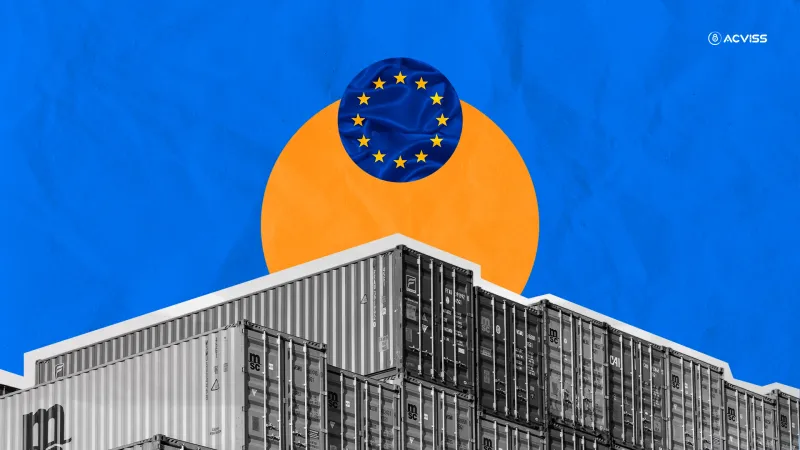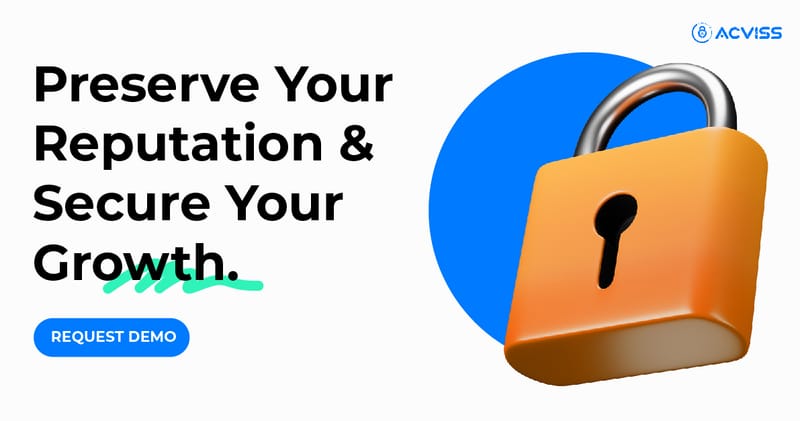Preparing for EUDR Audits: What Exporters and Brands Need to Know

The new EU regulation, the European Union's Deforestation Regulation (EUDR), is trending amongst the exporters and brands these days. The EU announced new regulations, which will be applicable soon. Exporters and Brands doing business in the EU market must make sure they take all the necessary actions to meet all the EUDR compliance requirements. Failure to do this will not only cost you suspension in the market but penalties of up to 4% of total revenue in the EU market can also be levied.
Here is a quick overview of what EUDR is:
Understanding EUDR Compliance
What is EUDR?
European Union's Deforestation Regulation (EUDR) is an initiative by the EU to support the global fight against deforestation. Commodities like cattle, coffee, cocoa, soy, palm oil, timber and rubber are the major focus. Any mentioned commodity or product derived from the said commodity, like leather, furniture, coffee, etc., cannot be traded in the EU market if they do not comply with the EUDR. Clear guidelines for EUDR have been set to which exporters and brands should strictly adhere to.
The compliance requirements mainly revolve around having a sustainable supply chain with good traceability. Let's say you are a coffee exporter who exports to the EU market. Now, according to the new EU regulations, you must track and trace your entire supply chain right from the farm where it was produced, the warehouse where it was stored and the method and ways used for its transportation.
Guidelines for EUDR
1. Scope:
The following commodities or products derived from the same come under the scope of EUDR.
- Cattle
- Coffee
- Cocoa
- Soy
- Palm Oil
- Timber
- Rubber
2. Regulation overview:
If you are an exporter or brand operating in the EU market, here are some important pointers to keep in mind.
- The commodities or products derived from the above list should not be produced on the land that is deforested after 31st December 2020.
- The exporter or brand and their products should completely comply with their own country of origin and its laws.
3. Due Diligence Statement (DDS):
Operators have to submit and get approval from the customs by submitting a DDS. The DDS should consist of:
- Information on the product, quantity, source of products, and evidence that they are from deforestation-free land.
- Evidence of risk assessment
- Evidence of risk mitigation for the red flags that might have been derived after risk assessment.
Must Read: Implementing Anti-Counterfeiting Solution for Better ROI
4. Deadline:
EUDR will be incorporated on 30th December 2024, and the rules will be applied for small decisions on 30th June 2025.
Since the deadline is not yet met, it is recommended that you start preparing for EUDR to avoid missing out on market opportunities.
Prepare for EUDR Audits
Initial Steps
1. Create an Inventory List
Create an inventory list to get an overview of all your products. Does any of this contain commodities that come under the scope of EUDR? If yes, then you have some work to do.
2. Review Current Due Diligence System
The new EU regulation, i.e. EUDR, will require exporters and brands to conduct thorough due diligence. If you already have a system in place, check if it is aligned with the EUDR. Identify the gaps, if any, and make necessary changes.
Must Read: Checklist for not getting a brand ban in EU market

Implementing a Compliance Program
1. Assign a Compliance Officer
The first step in implementation is to appoint a dedicated compliance officer within your company. This is a mandatory requirement as per the Guidelines of EUDR(Article 11, paragraph 2a).
The appointed person must have a clear understanding of the supply chain and should have the authority to make necessary changes. The role of a compliance officer is to make sure the entire supply chain is compliant with the EUDR. They will be coordinating with the internal team as well as the external stakeholders to manage the entire process.
2. Define Product Scope
It's time to make use of the inventory list you made. See which product falls under the scope of EUDR, whether you are selling direct commodities like coffee exporters selling coffee beans or a finished product like furniture.
You can check the entire scope of products that come under each commodity and derived products in Annex I of thisdocument.
3. Determine Market Participation Type
Now, it's time to understand where you stand in the supply chain to set up the proper system. Whether you are a producer, manufacturer, or trader, your due diligence will vary depending on your current position.
Example: If you are a coffee exporter, you will have to set up a proper process to see if the producer is producing the beans in deforestation-free land, where he is storing the goods, etc.
4. Onboard Your Suppliers
It's essential to onboard suppliers effectively to ensure compliance with the EUDR. You can start by clearly communicating EUDR requirements to all suppliers, emphasizing the importance of traceability and sustainability. Provide training sessions to internal staff to educate them on specific compliance measures.
Next, supplier agreements should be established that include EUDR compliance clauses. Regularly audit and monitor suppliers to ensure adherence. You can do this by using tools and technologies for real-time tracking and reporting.
5. Implement a Due Diligence System
A due diligence system is very important for EUDR compliance. Map out the entire supply chain and identify all participants and touchpoints. Implement a traceability system to track commodities from origin to final product. Make sure that all stages meet EUDR standards.
Conduct regular risk assessments to identify potential compliance gaps and red flags. Develop a risk mitigation plan to address any issues found, including corrective actions and continuous monitoring.
Maintain all these data and documents in a way that is easily accessible and traceable, as this will be used to prepare the Due Diligence Statement (DDS) and for audits and reviews.
6. Monitor and Evaluate Continuously
It is important to continuously monitor and evaluate EUDR compliance. Establish a system for regular audits and inspections throughout the supply chain. Use digital tools and platforms to facilitate real-time tracking and reporting of compliance status. Regularly review and update compliance strategies to adapt to regulatory changes and evolving market demands.

3 Major Pillars of EUDR Compliance
Here is a summary of all the above information. We can figure out that the EUDR compliance runs down to these three major pillars:
1. Track and Collect Data
None of this is possible if you don't track and record anything. This is one of the most tedious but most important tasks while complying with and preparing for EUDR audits. You need to identify various touchpoints to be tracked, look out for the correct tools to execute the process, and collect and record data.
Tracking and collecting data requires you to effectively track each and every action and movement of the commodity and collect all the relevant data like geolocation of land, quantity produced, where it was stored, how it was transported and much more. After that, All of that needs to be systematically recorded to present it during the audit. It is also important to do real-time tracking and ensure no tampering is done in the process whatsoever.
2. Conduct Risk Assessment
Conduct a thorough risk assessment. Look out for potential red flags in the supply chain. Exporters or brands need to continuously do such risk assessments to avoid any future hiccups. Maintain proper documentation for the same.
If any red flags are detected, mitigate the supply-chain risks. Also, make sure to maintain proper documentation.
3. Manage Due Diligence Statements
Proper management of due diligence statements is the final pillar of EUDR compliance. Compile comprehensive documentation that includes detailed information about the origin of the commodities, the compliance measures taken, and the results of risk assessments. Ensure that all records are up-to-date and accurately reflect your compliance efforts. Submitting a well-prepared Due Diligence Statement (DDS) to customs authorities is essential for gaining approval and avoiding penalties. Maintaining transparent and thorough records will facilitate smoother audits and reinforce your commitment to EUDR compliance.
⭐PRO TIPWhile risk assessment and managing due diligence statements will be done by an appointed compliance officer, you can utilize technology for tracking and collecting data. Tracking and recording can be a very tedious task, especially when there is a lot to be taken care of, like geolocation of the production land, the way the goods were stored, how they were transported, certification and much more. Using technology will reduce the workload, protect against any tempering, keep the consignment safe, and ensure accuracy. You can make use of Origin by Acviss. It is a blockchain-based track-and-trace solution designed to provide complete visibility and security throughout the supply chain. Origin helps monitor every stage of the supply chain of coffee exporters, from farm to cup of coffee and ensures authenticity and transparency. The track and trace system enhances supply chain integrity, supports sustainability efforts and protects against counterfeiting. |
|---|
Final Words
The deadline for EUDR compliance is not very far away. Make sure you start preparing for the EUDR audits now to avoid any hiccups in the future. We at Acviss are dedicated towards brand protection. We have protected 2 Billion+ products and worked with 80+ brands globally to date and counting. If you have any queries related to implementing supply chain tracebility or EUDR, you can reach out to our experts here.
